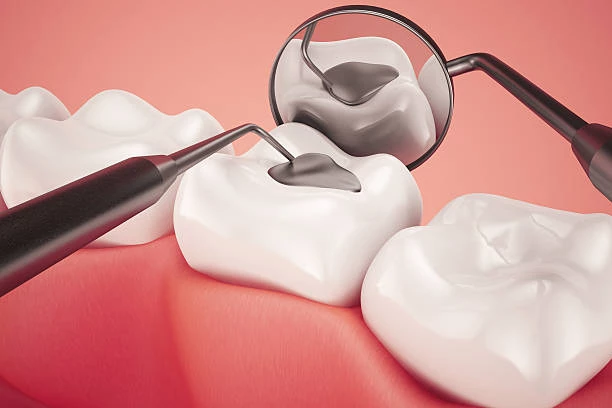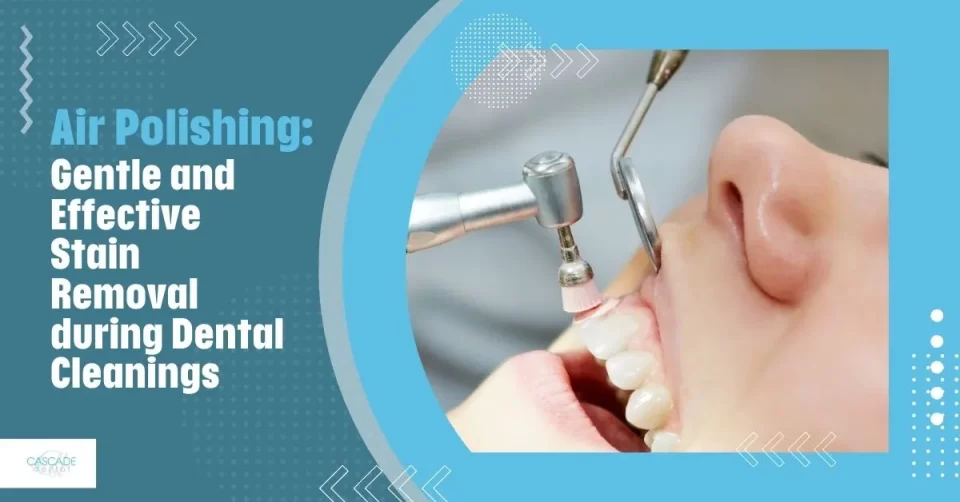Pediatric Cavity Fillings in Vancouver WA

composite fillings
Also known as tooth-colored fillings, are made of a mixture of plastic and glass. They are used to restore tooth decay and fix chipped or broken teeth. Composite Fillings can be used in both children and adults.
Pediatric Cavity Fillings are an important part of preventative dental care for children. These fillings help to protect kids’ teeth from further damage due to cavities or other oral health issues. The dentist will first examine your child’s mouth before determining the type of filling that is best suited for them.
Composite Fillings are ideal for pediatric cavity fillings because they require less drilling than other types of fillings such as amalgam (silver) fillings. There is also no risk of staining from the composite material, which makes them a great choice for children who may be more sensitive to dental procedures.

composite dental fillings repair & replacement
At Cascade Dental, we understand the importance of providing the highest quality care for your child’s dental health. When it comes to pediatric composite dental fillings repair and replacement, we take pride in offering a unique and comprehensive approach that ensures your child’s comfort and long-term oral health.
Our team of experienced pediatric dentists specializes in the repair and replacement of composite dental fillings for children of all ages. We recognize that children require specialized care, and we strive to create a safe and friendly environment where they feel at ease. From the moment you step into our office, our compassionate staff will go above and beyond to make your child’s visit a positive and enjoyable experience.
When it comes to repairing or replacing composite dental fillings, we utilize the latest advancements in dental technology and techniques. Our dentists are well-versed in the art of color-matching, ensuring that the repaired or replaced filling seamlessly blends with the surrounding teeth. This attention to detail ensures a natural and aesthetically pleasing smile for your child.
Furthermore, we understand that each child is unique and may have specific dental needs. That’s why we take the time to thoroughly evaluate your child’s oral health and customize the treatment plan accordingly. Our dentists will explain the procedure to you and your child in a gentle and easily understandable manner, alleviating any anxiety or concerns.
At Cascade Dental, we prioritize the well-being of your child and are committed to providing the highest standard of care. With our expertise in pediatric composite dental fillings repair and replacement, you can trust us to restore your child’s smile and oral health effectively and efficiently. Contact us today to schedule a consultation and experience our exceptional pediatric dental services firsthand.
advantages and disadvantages of composite dental fillings
Composite dental fillings are a great option for many pediatric cavities, but there are some advantages and disadvantages to consider.
Advantages of Composite Dental Fillings
- Can be color matched to blend in with the surrounding teeth
- Require less drilling than other types of fillings
- Cavity can be filled in a single visit
- Less sensitive to extreme temperatures than amalgam (silver) fillings
- Does not contain mercury, which is found in silver fillings
- Bonded securely so it does not slip or weaken over time
Disadvantages of Composite Dental Fillings
- More expensive than silver fillings due to the material and labor
- May not be suitable for larger cavities or fractures
- Can stain easily if not cared for properly
- Needs to be replaced more often than other types of fillings
Ultimately, composite dental fillings are a great option for many pediatric patients with cavities. A consultation with your child’s dentist is always recommended before making a decision on which type of filling will best suit their needs.
how long do composite fillings last?
The lifespan of a composite dental filling depends on the type and size of the cavity being filled, as well as the location in the mouth. Generally speaking, smaller fillings made from composite material can last up to 10 years or more with proper care. Larger fillings may need to be replaced more frequently, typically within 5-7 years.
It is important to keep in mind that how well you take care of your teeth has an impact on the longevity of your fillings. Good oral hygiene habits such as brushing twice daily and flossing regularly can help prolong the life of your fillings.
what is a composite dental filling made of?
Composite fillings are strong and durable; however, they may not be suitable for all cavities. Composite fillings are made of a combination of plastic and glass (methacrylate) particles. This material is safe and non-toxic, and can be color-matched to blend in with the surrounding teeth.
how long does a composite dental filling procedure take?
The duration of a composite dental filling procedure can vary depending on several factors. On average, it takes approximately 20 to 60 minutes to complete. The process involves multiple steps, such as preparing the tooth, removing decayed material, and applying the composite resin. The dentist will carefully shape and polish the filling to ensure a comfortable and natural fit.
However, the actual time required may depend on the size and location of the cavity, the complexity of the restoration, and the patient’s individual circumstances. Your dentist will provide a more accurate estimate based on your specific needs during a consultation.
ceramic fillings
Ceramic fillings are made of a porcelain material that is bonded to the surface of the tooth. Ceramic fillings provide a natural-looking restoration that resists staining and discoloration over time. This makes them ideal for use in visible areas, such as front teeth, where appearance is important. They can also last longer than other types of dental filling materials, making them an attractive option for those looking for a long-term solution.
ceramic tooth fillings repair & replacement
At Cascade Dental, we understand the unique needs of our young patients, which is why we specialize in providing pediatric ceramic dental fillings repair and replacement services. Our team of highly skilled and compassionate dental professionals is dedicated to ensuring the oral health and well-being of children, and we take pride in offering cutting-edge solutions such as ceramic dental fillings.
Pediatric ceramic dental fillings are an innovative alternative to traditional metal amalgam fillings. Made from a durable and biocompatible ceramic material, these fillings offer several advantages for young patients.
First, ceramic fillings are metal-free, making them an excellent choice for children who may have metal sensitivities or allergies. Furthermore, the tooth-colored appearance of ceramic fillings makes them virtually indistinguishable from natural teeth, providing a more aesthetically pleasing and confident smile.
When it comes to repairing or replacing pediatric ceramic dental fillings, our experienced team at Cascade Dental employs advanced techniques and state-of-the-art equipment to ensure a seamless and comfortable experience for our young patients. We understand that children may feel anxious or nervous about dental procedures, which is why we prioritize creating a warm and welcoming environment to help them feel at ease.
During the repair or replacement process, our skilled dentists will carefully examine the affected tooth and surrounding areas to determine the most appropriate course of action. If repair is possible, we will meticulously restore the ceramic filling to its original form and function. In cases where replacement is necessary, our team will remove the old filling and replace it with a new ceramic filling, ensuring a durable and long-lasting solution.
At Cascade Dental, we believe in the importance of preventive dental care, and we work closely with parents and guardians to educate them on proper oral hygiene techniques and habits for their children. Regular check-ups and cleanings are essential to maintaining the health of pediatric ceramic dental fillings and preventing future complications.
When it comes to pediatric dental care, trust Cascade Dental for exceptional and personalized treatment. Our commitment to excellence, along with our expertise in pediatric ceramic dental fillings repair and replacement, sets us apart as a leading dental practice focused on the well-being of young smiles.
the difference between ceramic & composite dental fillings
When it comes to dental fillings, there are several options available to restore damaged or decayed teeth. Two popular choices are ceramic and composite dental fillings. While both options are effective in treating cavities, there are some key differences to consider when choosing the right material for your needs.
Ceramic fillings are made of a porcelain material that is bonded to the surface of the tooth. Ceramic fillings are known for their natural-looking appearance, as they can be color-matched to blend in with the surrounding teeth. They also offer excellent durability, resisting staining and discoloration over time. These qualities make ceramic fillings an ideal choice for visible teeth, such as front teeth.
Ceramic fillings can also last longer than other filling materials, making them a great option for those looking for a long-term solution. However, ceramic fillings are more expensive than other filling materials, and the process of placing them typically requires more time and expertise.
Composite fillings, on the other hand, are made of a mixture of plastic and glass and can be color-matched to blend in with the surrounding teeth. These fillings require less removal of the natural tooth structure than other filling materials, making them a conservative option.
Composite fillings are typically less expensive than ceramic fillings, and the process of placing them can be completed in a single visit. However, composite fillings may not be suitable for larger cavities or fractures, and they can stain easily if not cared for properly.
Ultimately, the choice between ceramic and composite fillings comes down to individual needs and preferences. While ceramic fillings offer superior durability and a natural appearance, composite fillings are a more affordable and conservative option. A consultation with your dentist can help determine the best type of filling material for your specific needs. Regardless of the material chosen, proper oral hygiene and regular dental check-ups are essential to maintaining the health and longevity of your dental fillings.
can you eat solid food after a ceramic dental filling?
Yes, you can usually eat solid food after a ceramic dental filling. However, it is important to wait until the anesthetic has worn off before eating anything as biting or chewing on the treated area too soon may cause discomfort.
Additionally, it is recommended to avoid eating sticky or hard foods for the first few days following the procedure in order to ensure that the material has had enough time to set properly and allow for adequate healing. Your dentist will provide specific instructions regarding eating and drinking after your ceramic dental filling procedure.
how long does it take to fully heal after a ceramic filling?
It typically takes between one to two weeks for a ceramic filling to fully heal. During this time, it is important to practice good oral hygiene habits and avoid biting or chewing on the treated area too soon as this can cause discomfort or even damage the newly placed material. Your dentist will provide specific instructions regarding eating and drinking after your ceramic dental filling procedure.
how to care for your ceramic dental filling?
Caring for your ceramic dental filling is important to ensure its longevity and maintain overall oral health. Proper oral hygiene habits such as brushing twice daily, flossing regularly, and using mouthwash can help keep the treated area clean and free of plaque or bacteria that could lead to further decay or infection.
Additionally, it is important to avoid eating sticky or hard foods until the anesthetic has worn off completely in order to prevent discomfort or damage to the newly placed material. If you have any questions regarding your specific care instructions after a ceramic dental filling procedure, be sure to consult with your dentist.
are ceramic dental fillings permanent?
Ceramic fillings are designed to last longer than other types of dental fillings, however they are not permanent and may need to be replaced at some point. The longevity of ceramic fillings depends on several factors such as the size and location of the filling, how well you take care of your teeth, and lifestyle habits such as drinking or smoking.
Generally, smaller ceramic fillings can last up to 15 years with proper care while larger fillings may need to be replaced more frequently. Regular check-ups with your dentist will help ensure that any necessary repairs or replacements are done in a timely manner.


